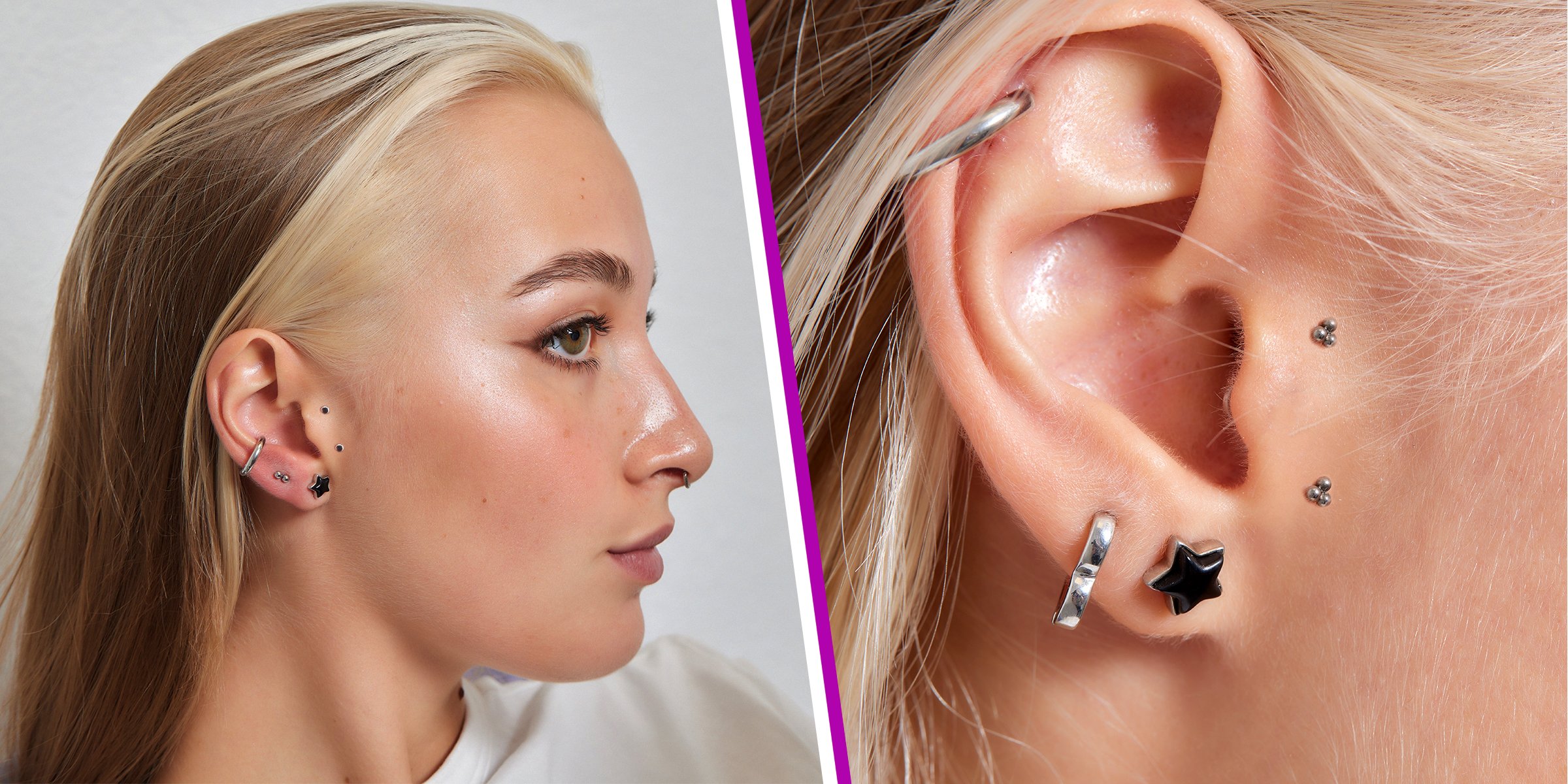
Surface Tragus Piercing: All We Know about the Unusual Piercing Style
Introducing the surface tragus piercing, a dainty look that needs two holes to be done right. With the mainstream acceptance of piercings, septum rings, eyebrow rings, and tongue rings no longer carry the shock value they once did.
Healthline cautions against piercers who attempt to use a piercing gun for a surface tragus piercing as the Association of Professional Piercers (APP) has listed sterility and tissue damage as disadvantages of this method.
Also known as a vertical tragus or sideburn piercing, this form of needlework is not a lifetime commitment as it only lasts five to seven years.
What Is a Surface Tragus Piercing?
Let's take it down to the basics. A surface piercing is essentially a double-pierced look that is flat against the surface of the body. To achieve this, a piercer generally pinches the skin and pushes the metal through. Some variations of bellybutton piercings can also fall under this class of needlework.
Though it has a similar visual appeal to a dermal piercing, which has only one piercing point and an anchor to keep it in place, a surface piercing has two clear piercing points.
While it shares similar real estate on the body, the surface tragus piercing does not go through the cartilage like its neighbor, the tragus piercing. The surface tragus piercing is inserted vertically into the tragus in the fleshy skin next to the ear.
Does It Hurt, and How Long Does It Take to Heal?
As with any needlework – whether a tattoo or piercing – personal pain levels and lifestyle play a significant factor in healing time. A surface tragus piercing can be more painful than a standard tragus piercing but should subside in minutes.
Take care when selecting the jewelry that will be inserted.
The healing period generally takes eight weeks and, in some extreme cases, up to a year, which makes this a far more significant commitment than most piercings that last a lifetime. In contrast, surface piercing is a long-term temporary fitment.
What Side Effects and Precautions Should You Consider?
The potential of an extended healing time is a major factor when considering these kinds of attachments. Always remember to only go to a professional piercer in a sterile environment to avoid blood-borne infections like hepatitis and HIV.
Any surface piercing has a high chance of being rejected by the body. According to Healthline, on rare occasions, the body will view the new jewelry as a foreign body and try to push it out.
Allergies can cause bumps and itchiness. Take care when selecting the jewelry that will be inserted. Used for surgical implants, surgical stainless steel is a good option for most people, but it does contain trace amounts of nickel, one of the most common allergens in metal.
Aftercare for Your Surface Tragus Piercing
When you finally get the surface tragus piercing, remember that aftercare is a necessity for the entire duration of the healing process, which can be a year in the worst-case scenario. Naturally, the probability of infections increases with every day your new accessory takes to heal.
Gently clean the new piercing daily. A lack of oxygen from too-tight jewelry can lead to infection.
While your surface tragus piercing is healing, try not to use a phone or sleep on the side of the piercing. The jewelry is prone to snatch on clothing, headphones, and bedding, and excessive touching increases the chance of infection.
Like with all piercings, lifestyle choices such as smoking and alcohol consumption has a detrimental impact on the healing process. Long hair can also expose the piercing to bacteria and increase the possibility of snagging.
The information in this article is not intended or implied to be a substitute for professional medical advice, diagnosis or treatment. All content, including text, and images contained on WomanlyLive.com, or available through WomanlyLive.com is for general information purposes only. WomanlyLive.com does not take responsibility for any action taken as a result of reading this article. Before undertaking any course of treatment please consult with your healthcare provider.
